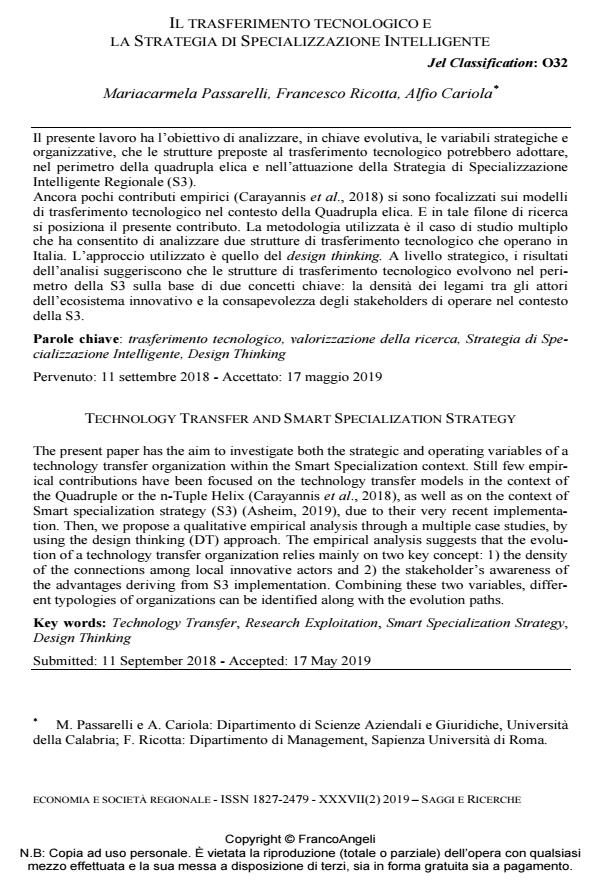Il trasferimento tecnologico e la strategia di specializzazione intelligente
Titolo Rivista ECONOMIA E SOCIETÀ REGIONALE
Autori/Curatori Mariacarmela Passarelli, Francesco Ricotta, Alfio Cariola
Anno di pubblicazione 2019 Fascicolo 2019/2
Lingua Italiano Numero pagine 31 P. 116-146 Dimensione file 559 KB
DOI 10.3280/ES2019-002011
Il DOI è il codice a barre della proprietà intellettuale: per saperne di più
clicca qui
Qui sotto puoi vedere in anteprima la prima pagina di questo articolo.
Se questo articolo ti interessa, lo puoi acquistare (e scaricare in formato pdf) seguendo le facili indicazioni per acquistare il download credit. Acquista Download Credits per scaricare questo Articolo in formato PDF

FrancoAngeli è membro della Publishers International Linking Association, Inc (PILA)associazione indipendente e non profit per facilitare (attraverso i servizi tecnologici implementati da CrossRef.org) l’accesso degli studiosi ai contenuti digitali nelle pubblicazioni professionali e scientifiche
Il presente lavoro ha l’obiettivo di analizzare, in chiave evolutiva, le variabili strategiche e organizzative, che le strutture preposte al trasferimento tecnologico potrebbero adottare, nel perimetro della quadrupla elica e nell’attuazione della Strategia di Specializzazione Intelligente Regionale (S3). Ancora pochi contributi empirici (Carayannis et al., 2018) si sono focalizzati sui modelli di trasferimento tecnologico nel contesto della Quadrupla elica. E in tale filone di ricerca si posiziona il presente contributo. La metodologia utilizzata è il caso di studio multiplo che ha consentito di analizzare due strutture di trasferimento tecnologico che operano in Italia. L’approccio utilizzato è quello del design thinking. A livello strategico, i risultati dell’analisi suggeriscono che le strutture di trasferimento tecnologico evolvono nel perimetro della S3 sulla base di due concetti chiave: la densità dei legami tra gli attori dell’ecosistema innovativo e la consapevolezza degli stakeholders di operare nel contesto della S3.
Parole chiave:Trasferimento tecnologico, valorizzazione della ricerca, Strategia di Specializzazione Intelligente, Design Thinking
- Scienza partecipata e coinvolgimento di attori locali. Una lettura territoriale del modello a quintupla elica a partire dal caso del bacino del fiume Ombrone Cristina Capineri, Giacomo-Maria Salerno, Venere Stefania Sanna, in RIVISTA GEOGRAFICA ITALIANA 2/2025 pp.90
DOI: 10.3280/rgioa2-2025oa20570 - Citizen Science, territorio e comunità Venere Stefania Sanna, Cristina Capineri, Giacomo-Maria Salerno, Michela Teobaldi, (ISBN:979-12-215-0698-3)
Mariacarmela Passarelli, Francesco Ricotta, Alfio Cariola, Il trasferimento tecnologico e la strategia di specializzazione intelligente in "ECONOMIA E SOCIETÀ REGIONALE " 2/2019, pp 116-146, DOI: 10.3280/ES2019-002011